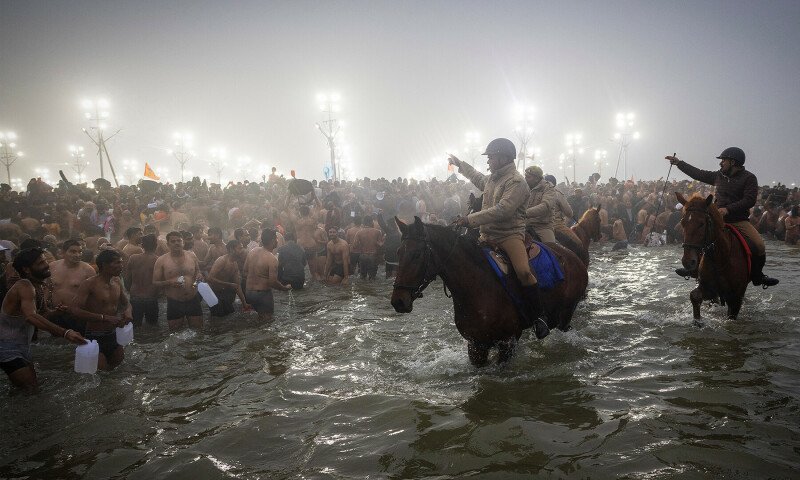The police official says the footage is fed into an AI algorithm that gives its handlers an overall estimate of the crowd spread out for miles in all directions.
Seeking to improve on India’s exceptional crowd management record at large-scale religious events, organizers of the world’s largest human gathering are using artificial intelligence to curb the stampede.
Organizers predict 400 million pilgrims will visit the Kumbh Mela, a 1,000-year-old sacred show of Hindu piety and ritual bathing that began on January 13 and lasts for six weeks.
Deadly mob crushes are a notorious feature of Indian religious festivals, and the Kumbh Mela, with its unprecedented crowds of devotees, has a serious stampede record.
“We want everyone to return home happy after fulfilling their spiritual duties,” said Amit Kumar, a senior police officer who is heading tech operations at the festival. AFP.
“AI is helping us avoid reaching this critical mass in sensitive areas.” In 1954, over 400 people were trampled to death or drowned at the Kumbh Mela on a single day of the festival, one of the worst crowd-related disasters worldwide.
Another 36 people were crushed to death in 2013, the last time the festival was held in the northern city of Prayagraj.
But this time, officials say the technology they have deployed will help them accurately estimate crowd sizes, allowing them to better prepare for potential trouble.
Police say they have installed around 300 cameras, mounted on poles and a fleet of overhead drones, at the festival site and on the roads leading to the sprawling camp.
Not far from the fair’s spiritual hub at the confluence of the Ganga and Yamuna rivers, the network is monitored by a small army of police officers and technicians in a glass-paneled command and control room.
“We can see the entire Kumbh Mela from here,” said Kumar. “There are camera angles where we can’t even see the full body and we have to count using the head or the torso.”
Kumar said the footage is fed into an AI algorithm that gives its handlers an overall estimate of the crowd spread over miles in every direction, cross-checked against data from railway and bus operators.
“We are using AI to track the flow of people, the crowd density at different entrances, adding them up and then interpolating from there,” he added.
The system sounds an alarm if parts of the crowd become so concentrated that they become a safety hazard.
‘Makes us feel safe’
The Kumbh Mela has its roots in Hindu mythology, a battle between gods and demons for control of a pitcher that holds the nectar of nectar.
Organizers say the scale of this year’s festival is that of a temporary country — expected to be around the combined population of the United States and Canada.
Some six lakh devotees According to official estimates, the first morning of the festival took a dip in the river.
With a congregation of this size, Kumar said some degree of crowd-crushing is inevitable.
“The personal bubble of an individual is quite large in the West,” Kumar said, explaining how the critical threshold at which AI crowd control systems raise alarm bells compared to other countries using similar crowd management systems. I have more.
“The standard there is three people per square foot,” he added. “But we can afford to go many times that.”
Organizers are eager to explore the technological advancements of this year’s edition of the Kumbh Mela and the benefits of their attendance for pilgrims.
Uttar Pradesh Chief Minister Yogi Adityanath, a devout Hindu monk whose government is responsible for organizing the festival, has described it as an event “at the crossroads of faith and modernity”.
“There are cameras and drones, we feel safe,” said Harshit Joshi, a 28-year-old automotive engineer, one of the hundreds of thousands of visitors who flocked to the fair’s opening. AFP.
Header Image: Policemen on horseback shower devotees with water before the arrival of Naga Sadhus, or Hindu holy men, during the first “Shahi Asnan” (awesome bath) during the “Maha Kumbh Mela” or Great Pitcher Festival in Prayagraj. are being removed. India on January 14.— Reuters.












































